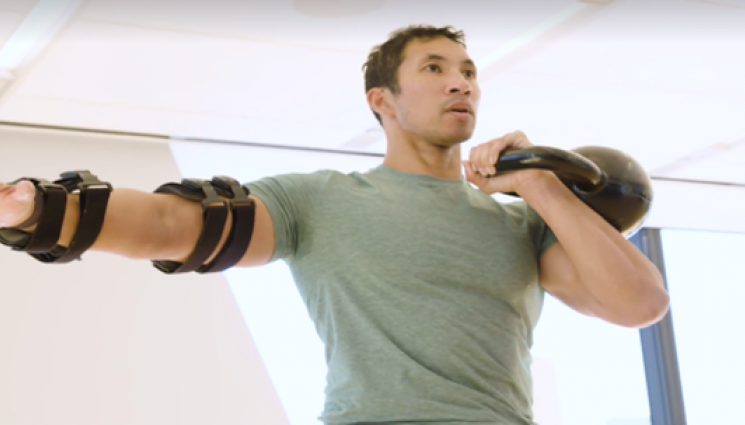
Following an upper limb injury or procedure, one of the biggest complaints that we get from patients is the inability to be able to perform their regular exercise. Most often this is after being immobilised in a cast or sling following a traumatic injury or fracture. This may also be very soon after an acute soft tissue injury where the arm may not be immobilised however you are unable to fully train it.
Whilst being immobilised does result in severe restrictions with regards to exercise there are in fact ways round it. The World Health Organisations recommend 150-300 minutes of moderate aerobic activity per week for adults. It is important that we try to continue this as best as possible. It may require exercising at a reduced intensity and different exercises to what we are used to however this is much more beneficial than no exercise at all. Therefore, here are 5 ways you can exercise – see our video on Instagram for demos of some of these!
Things to remember first!
- Talk with your consultant prior to exercising.
- Listen to your body - Training should not cause increased pain in the injured area – it should be kept immobilised which may mean exercising at a reduced intensity or volume.
- Casts/slings tend to easily absorb water and sweat and can therefore begin to smell.
- Allow for plenty rest – Your body is in a metabolic process of healing which requires energy.
- Do not neglect your rehabilitation in favour of general exercise.
1.Lower limb exercises

This is the perfect opportunity to get the quads, hamstrings, glutes, and calves as strong as possible. Depending on your ability you can do these bodyweights or with a weight in the unaffected arm. Some exercise examples include squat variations, lunges, reverse lunges, Bulgarian split squats, calf raises, Copenhagen holds, bridge variations and band work.
2.Training the unaffected side
If you’re worried about looking imbalanced on one side of your body compared to the other - relax, this is a fitness myth. In fact, this can be the opposite with the contralateral strength training effect. This means that when exercises are performed to increase muscle strength on one side of the body then voluntary strength can increase on the other side which will reduce muscle wasting. Be careful when doing this type of training especially with free weights – go lighter than usual and have a training partner to help you stabilise the weight.
3.Machine based exercises

When it comes to training during an injury, machine-based exercises which are pin loaded are your best friend. They are extremely safe as they isolate a particular muscle and allow as close to maximal training as possible. There are a range of lower limb exercises as well as upper limb exercises which you can use unilaterally. The only drawback is accessing however most gyms will have most machines.
4.Aerobic exercise

Maintaining your normal aerobic capacity will be one of the biggest challenges during this period. Again, you want to get as much out of it as you can and there are definitely ways round it. The stationary exercise bike is your best option for these however other options include the stair climber, rowing with 1 arm, and high volume of lower body exercises and long walks. Try to achieve 10,000 steps per day as long as walking doesn’t increase pain.
5.Core and trunk exercises
Again, slightly more limited. Safe options include sit-ups and straight-legged raises while you lay on your back. You should avoid any type of plank exercise, or other exercises that requires the use of your injured arm.
